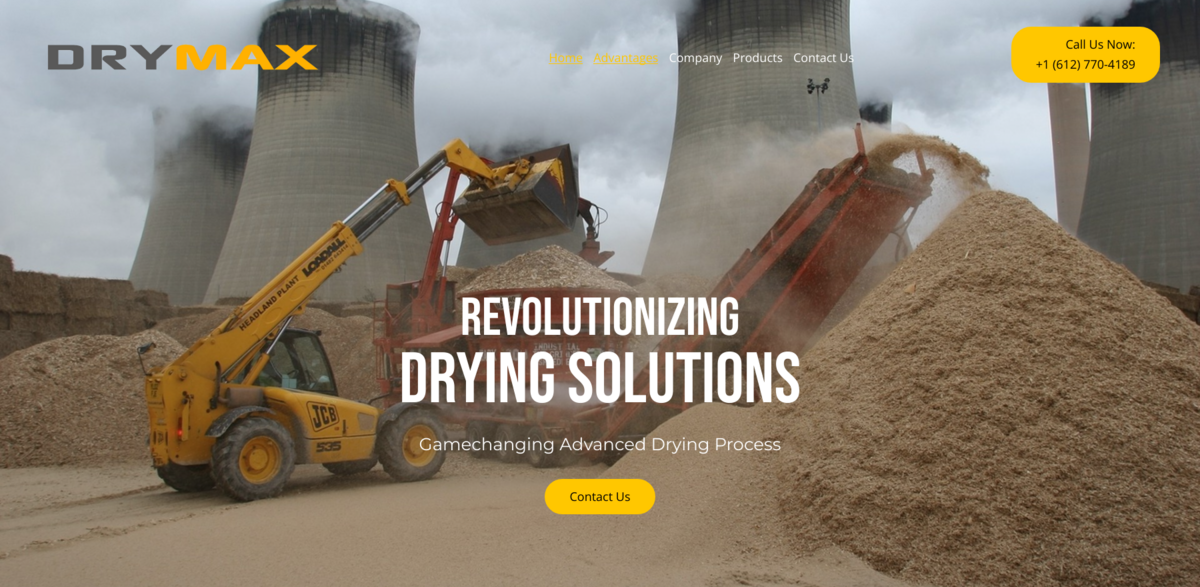What is DryMAX Forcefield Technology?
The DryMAX project introduces an innovative solution for some of the world’s most energy-intensive drying needs, employing a patented system called ForceField Technology. This technology revolutionizes the drying process by utilizing radio wave energy (RWE) tuned specifically to target water molecules. Instead of conventional high heat that can compromise quality, the ForceField system dries materials from the inside out at lower temperatures, allowing many feedstocks—inclusive of corn, soybeans, wood chips, and even minerals—to be dried with minimal impact on nutritional or volatile qualities. DryMAX has been successfully tested on over forty feedstocks, which paved the way for launching its corn, soybean, and wood chip dryers in 2020. The concept is simple but groundbreaking: lower energy consumption, reduced operational expenses, and elimination of carbon emissions.
Main Benefits and Key Features
The advantages of using DryMAX’s ForceField dryers are both vast and measurable. The benefits embrace safety, cost efficiency, and scalability, and the approach fundamentally disrupts traditional drying systems that rely on propane, natural gas, and high heat. Key figures and facts are as follows:
- Electrical only – 3 phase 480 V or 240 V operation
- Safe – Minimizes the risk of gas explosions and fire hazards
- Cost – Low energy per ton results in lower overall operating costs
- How Large? – Systems can be scaled to suit any operation, from small bushel/hr units to large tons/hr systems
- Automated – Features include phone app automation for easy operation
- Mobile – Modular design allows units to be moved or expanded as requirements grow
Lowering Carbon Emissions and Energy Efficiency
The DryMAX system significantly lowers carbon emissions by eliminating reliance on propane or natural gas in the drying process. Drying with radio wave energy not only conserves energy but also promotes an eco-friendly approach by reducing annual fuel usage—a clear benefit when environmental impact is considered. Many materials even cool during the drying process rather than heating up, as traditional systems might do. This inside-out drying process helps preserve critical nutritional components and volatile elements like taste and aroma. The innovation, when paired with the inherent safety and cost benefits, is a game changer for industries sensitive to energy efficiency and ecological sustainability…
Modular Systems and Scalable Operations
One of the standout features of DryMAX is its modular design. This allows for a flexible, scalable approach suitable for a wide range of users—from individual farmers to large industrial refineries. The modular structure means that once a business is ready to expand, the technology can grow accordingly. The adaptability of the system ensures that operations never encounter the constraints typical of a fixed, less versatile dryer system. The option to design a custom solution with either a continuous flow setup or batch process means that operations can be optimized based on unique needs, offering added benefits such as reduced drying costs and minimized field loss. This focus on scalability and flexibility creates more capital for expansion and new business opportunities.
Expanding Value with Add-On Innovations
Future enhancements for the DryMAX system include the development of add-ons that further expand the drying applications. In 2023, plans to integrate additional units into the existing ForceField system were outlined, thereby allowing the technology to dry other materials such as alfalfa, manure, and various types of waste. This plug-in approach not only provides added value to the customers but also saves time and further lowers operational costs. With these add-on units, the process becomes even more versatile, essentially turning a singular drying technology into a multi-application tool that meets the evolving demands of agricultural and industrial operations.
Diving Deeper into ForceField Technology
At the heart of DryMAX lies its innovative ForceField technology. This system employs radio wave energy to break the hydrogen bonds in water at room temperature. The result is the production of water vapor rather than steam, ensuring that the drying process remains gentle and that the intrinsic qualities of the dried materials are preserved. The vapor is efficiently expelled by a high-performance fan, while a computer continuously monitors moisture levels and adjusts energy input and airflow accordingly. This ingenious design ensures that the drying process can either maximize throughput or efficiency based on the required application. The approach demonstrates a marked improvement over traditional high-heat systems, fostering a more reliable and consistent drying process.
Project Impact on Sustainable Development Goals
- SDG 2: Zero Hunger – By preserving nutritional quality and increasing yield, the technology supports food security.
- SDG 7: Affordable and Clean Energy – The all-electric drying process significantly reduces fuel consumption and carbon emissions.
- SDG 9: Industry, Innovation and Infrastructure – The modular and scalable design encourages technological innovation in industrial drying.
- SDG 13: Climate Action – Lowering carbon emissions contributes to broader efforts in mitigating climate change.
Implications for Future Applications
The DryMAX project is setting the stage for a future where energy-intensive drying processes can be reimagined. By harnessing the power of radio wave energy, this technology challenges traditional, high-heat drying methods and paves the way for more sustainable and cost-effective operations in agriculture, biomass, food systems, and industrial applications. With its modular design, scalability, and future add-on innovations, DryMAX not only transforms the current landscape of drying technology but also offers a glimpse into a more efficient and environmentally conscious future. As industries seek to reduce operational expenses and lower their carbon footprint, the impact of such disruptive technology is clear—it represents a significant leap towards achieving sustainable operational practices globally, a future where quality is preserved and resources are used responsibly…





















